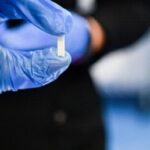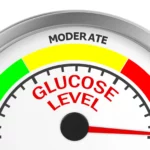
Menu

by
|
Have you found that you’ve hit a wall when it comes to your fitness? Is it getting harder and harder to lose weight and keep it off? You may be experiencing something that affects millions of men worldwide: the symptoms of low testosterone (aka hypogonadism).
More specifically, you’re probably dealing with one of the many symptoms of low testosterone in men, and that is weight gain. If your body just isn’t responding to that morning run the same way that it used to, you could very well be locking horns with low testosterone levels.
Learn how low testosterone levels and weight gain are related and discover how you can break the vicious cycle to experience greater vitality, improved lean body mass, and better total health.
It has been proven that testosterone plays a critical role in muscle growth and development. Inversely, it also helps suppress the growth and spread of fat. Testosterone promotes lean muscle mass, while resistance training, such as lifting weights, and sustaining muscle supports adequate testosterone levels.
Unfortunately, many men find that their body begins to work against them as they age—declining testosterone levels make it hard have enough energy for the gym and even if when lifting weights does happen, the results just aren’t the same.
Studies have found that on average, obese men have testosterone levels that are roughly 30 percent lower than those in men who are average weight. On the other side of the coin, it has been found that more than 70 percent of men who qualify as morbidly obese also suffer from hypogonadism and the resulting low testosterone levels.
While it’s hard to point the finger a single contributing link between testosterone and weight gain, many believe that the aromatase enzyme a primary culprit. With less testosterone comes less muscle mass, and that often means more fat. Aromatase, which is commonly concentrated in belly fat, actually converts testosterone into estrogen. As if that weren’t difficult enough to work around, this activity is also known to reduce testosterone production. That means that low testosterone can lead to excess fat, which may further reduce levels of testosterone. The vicious cycle begins.
Here are 10 of the other signs and symptoms that could be your body’s way of telling you that you are struggling with the effects of low testosterone:
Loss of LibidoErectile DysfunctionDifficulty with focus or concentrationHot FlashesBreast Development or Increased Breast Size (Gynecomastia)Decreased Body HairFatigueMood Swings and Increased IrritabilitySleep IssuesBrittle Bones
As you can see, low testosterone and excess belly fat are two conditions that feed off one another and may even strengthen one another. That means once you start down that road with weight gain, the two conditions will most likely continue to become worse and worse. This can obviously make it much harder for you to see positive results from diet and exercise alone, especially when you also factor in the increased fatigue/lethargy that comes with low T.
So how can you hop off this vicious cycle and get back to feeling your best and reaching your full potential? To find the answer, let’s stay focused on your Testosterone levels.
Since testosterone levels play such a large role in muscle loss and the development of fat, does that mean that increasing your levels of testosterone could promote muscle gain and fat reduction?
According to research, the answer is “yes”. Long-term testosterone replacement therapy (TRT) has been proven to help men lose weight and keep it off by promoting the development of lean muscle mass and suppressing excess fat.
Wouldn’t you love to have enough energy to stick with those morning runs and weightlifting routines? How great would it be to get back to a place where you are actually rewarded with results when you exert yourself in workouts and make changes to your diet? Not only that but losing weight can actually help boost your testosterone levels. Just as the cycle can work against you, it can be used to your benefit as well.
Testosterone replacement therapy may also correct and minimize some of the other symptoms of testosterone deficiency.
One of the most unfortunate symptoms of low testosterone in men is erectile dysfunction (and overall sexual dysfunction). This can obviously have a very negative impact on your mental well-being and overall health. Fortunately, studies have shown that balancing your testosterone levels can improve overall sexual function and correct erectile dysfunction. If you have found yourself struggling with decreased libido, testosterone replacement therapy may be a real solution.
Loss of bone density and increased risk of osteoporosis are both apotential result of low T that can have a massive impact on your overall health and quality of life. The loss of density means that your bones actually become brittle and more susceptible to fractures and other injuries. Balanced testosterone levels can reverse that trend and provide your bones with the protection they need in order to avoid serious injuries.
Studies have also shown that low testosterone levels correlates with a higher risk of more serious health impacts like heart disease and type 2 diabetes. Finding and maintaining a proper balance of your testosterone levels could reduce the risk of developing those diseases and really help you optimize your health as you age.
Of course, there are the cognitive and mental impacts of low T as well. Testosterone deficiency in men may not only lead to trouble with focusing, but it can lead to mood swings and increased irritability as well. Therefore, correcting low testosterone levels has the potential to provide you with cognitive benefits. If you have been struggling with focus, brain fogor irritability, testosterone replacement therapy could help clear your head and restore your mental well-being—among other benefits.
Once you decide to move forward with testosterone replacement therapy, you will be faced with another decision: what is the best form of TRT? There are different options available for testosterone therapy. You can choose a delivery method that best suits your goals and lifestyle.
Gels. Gels are applied to your skin on a daily basis, much like a traditional skincare product. While this may seem like the easiest, most convenient method for administering testosterone, men who choose this option must be diligent about daily application and dosing measurements. The biggest downside to gels is the risk to your spouse, children, pets, and anyone else with whom you might come in close contact.
Patches. Patches are commonly applied at the beginning of a treatment cycle, much like a band aid, and must stay in place for the duration of that cycle. While patches are less messy than gels, they carry the risk of falling off and disrupting proper dosing throughout each.
Injections. Injecting liquid testosterone into your muscle on a weekly to semi-weekly basisis another option. This method does remove the risk of other people coming into contact with the hormone by accident. However, you must administer these injections yourself (or ask someone else to do it) frequently as well as deal with roller coaster dosing, meaning a surge of hormones at the time of injection and a sharp decline just before the next injection. Thereare also other inconveniences like discomfort or pain at the injection site.
Pellets. Testosterone pellets are very small (about the size of a grain of rice) and are only administered by a qualified medical professional. They are inserted under your skin, and a single insertion would provide 3 to 6months of hormonal balance depending on your gender and treatment plan. With right pellet therapy, there is little to no risk of side effects or discomforts.
EvexiPEL pellet therapy is designed to optimize the pellet insertion experience and provide you with consistent hormonal balance for 3 to 6months. Discover what makes EvexiPEL superior to other pellet therapy options.
The EvexiPEL founder, Dr. Terri DeNeui, was tired of the reactionary approach of traditional medicine and wanted to help her patients optimize their health before the symptoms of hormonal imbalance really started to take their toll. While she recognized pellet therapy to be a highly effective and convenient form of HRT, she also heard some of the common complaints. These complaints include scar tissue, pain at the insertion site, and inconsistent dosing throughout the treatment cycle.
Across 15 years, Dr. DeNeui examined the research and challenges facing pellet therapy. Her dedication to patient care, innovation and problem-solving, led her to develop EvexiPEL pellet therapy. EvexiPEL provides patients with a better experience from the first insertion and throughout each treatment cycle while yielding and transformative results that patients can’t stop talking about.
Dr. DeNeui also designed EvexiPEL pellets to deliver steady dosing to your body for 2-the entire treatment cycle. Each treatment cycle delivers steady, consistent release of testosterone without the hassles of remembering to apply creams or injections or worrying about transference.
Tens of thousands of people are feeling better than they have in years thanks to EvexiPEL pellet therapy. When you spend less time worrying about daily doses of messy creams or painful weekly injections you get to spend more time enjoying your renewed health and vitality. Just one painless pellet insertion can help you enjoy more energy, more effective workouts, better sleep, renewed libido, and all the other benefits of consistent hormonal balance.
Contact an EvexiPEL certified practitioner and discover the EvexiPEL difference today.
The post Low Testosterone & Weight Gain in Men: Is There a Connection? appeared first on EVEXIAS Health Solutions.




